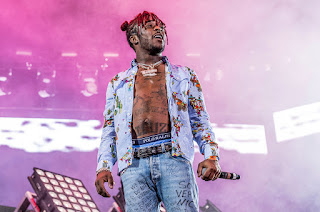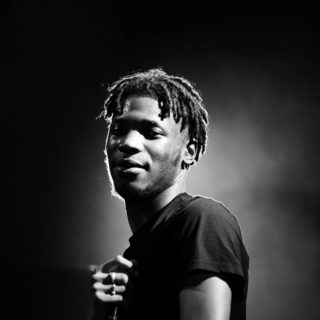Rap star Lil Uzi Vert
Lil Uzi Vert has purple dreadlocks, a precious stone encrusted chain with a similarity of Marilyn Manson, a repugnance for interviews, and a solitary, "XO Visit Llif3," which as of late went to No. 8 on the Bulletin Hot 100.
He is an impossible subrosa hip-bounce star — as much vocalist as rapper, as much shake as rap. With a hearty SoundCloud nearness and floated by online networking instigated enthusiasm, he is prevailing at his own particular frantic and helter-skelter beat.
On the current week's Popcast, Mr. Caramanica examines the improbable ascent of Lil Uzi Vert with Joe Coscarelli, popular music correspondent for The New York Times, and David Turner, an independent essayist for Moving Stone, Pitchfork and other people who as of late composed an introduction on Lil Uzi Vert's initial work for Stereogum.
The main purpose of discourse: Would could it be that Lil Uzi Vert does? Mr. Coscarelli portrays him as starting in a little gathering of youthful hip-bounce specialists who "are extremely a bigger number of characters and big names via web-based networking media than they are rappers." They're design cognizant, have exceptionally characterized feel and have figured out how to create a story around themselves. "What they're doing is world-building — the music comes second."Mr. Turner clarifies why encountering Lil Uzi Vert's index as a group, on SoundCloud, is the best technique: "You possibly don't see the points of interest in light of the fact that there's so much, so the possibility of Uzi is bigger than the individual melodies."
In the wake of tuning in to a clasp of "Get It," Mr. Coscarelli notes of Lil Uzi Vert's songwriting method, "It's by sheer power of will and allure and redundancy that some of these things begin to stand out." And Mr. Caramanica contends that the most noticeably awful thing a mark could do is show Uzi the best possible approach to compose melodies: "He takes basically junk parts, similar to squander container stuff, and lines it together into something that generally approximates rap, or not, and it works." (Later, the gathering tunes in to a bit of a variant of Migos' "Terrible and Boujee" altered to just incorporate Uzi's "ya" vocal again and again.)
There's a brattiness and outlandish nature to Uzi's melodies that interest to more youthful crowds. And keeping in mind that Mr. Turner says that for kids, Uzi is a demigod (since few shake artists have developed to fill that part in the 2010s), that situating is shrewd from a business point of view as well, as celebration bills are stuffed with groups and light on rappers.
Watching "XO Visit Llif3" performed in a celebration setting, Mr. Coscarelli takes note of that the track turns into a singalong, "and when you're just hearing the children chiming in, you won't not hear it as a rap melody."
Tune in to hip-bounce in 2017 and hear the darnedest things. There are rappers who rap in just infrequent, apparently arbitrary blasts. There are rappers who mainline the stylish and vibrating vitality of punk. Also, there are surrealists who extend words and tunes like taffy.
The class is touching base at its Dalí stage, when all the old structures — formalist lyricism, soul music DNA, standard pop aspiration — are dissolving into something just half-unmistakable.
Everything makes for a fun-house go up against the class, and its present instigator is Lil Uzi Vert, who a week ago discharged his best collection, "Luv Is Anger 2," on the foot rear areas of his breakout hit "XO Visit Llif3," a severe and brazen tune about recrimination that is part punchy rap, part marvelous R&B and part melodic in-your-face, which went from a post on SoundCloud to No. 7 on the Bulletin Hot 100.
As much as any collection — some of Youthful Hooligan's surrealist mixtapes and collections come nearest — "Luv Is Fury 2" epitomizes the occasion, disordered and dangerous. Lil Uzi Vert is a strongly appealling and unusual nearness. One moment he is sweetly singing; the following, bleating; at that point he is rapping in firmly bunched sniffles. As structures go, he is languid. He raps and sings with the certainty of somebody who realizes that ages previously him have made the tenets, and furthermore played by them, liberating him up to overlook them out and out.
In places, he is something near a traditional rapper — on "Dim Ruler," about his mom, and "No doubt" — however he is similarly prone to encapsulate screamo and emotional, spiritualized funk or conceptual, pointillist pop. When he raps, he's relatively rough, yet when he sings, he's sweet, unusual, marvelous.



Comments
Post a Comment